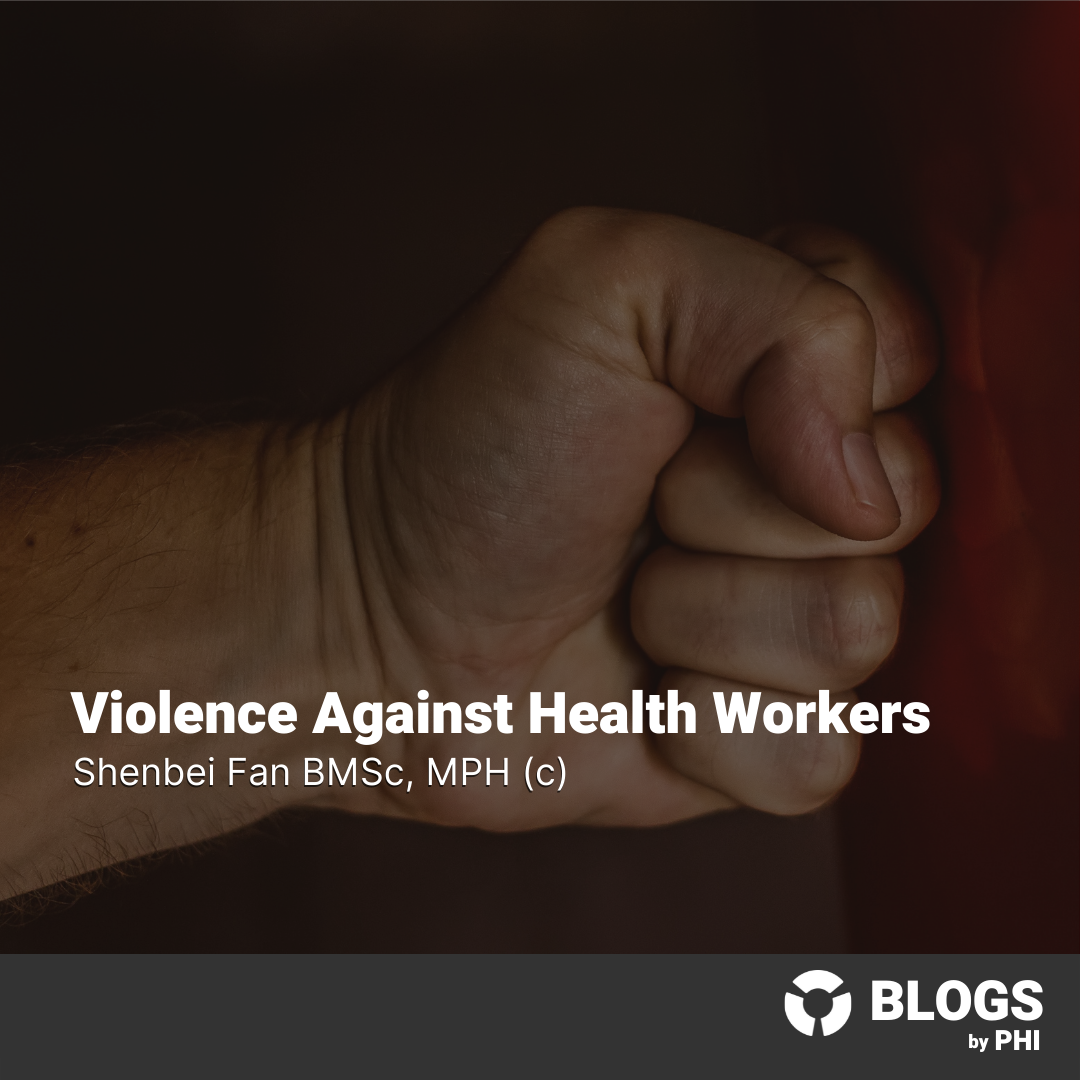
18/1/2022
“Studies show violence against healthcare employees is more common than most people realize, and advocacy groups say it’s time for policymakers to act on this growing but underreported problem…Those unfamiliar with daily events in healthcare institutions may be shocked to learn that violent altercations are so common that most employees in the field consider them to be simply part of the job.”
– (Stephens, 2019)
Health workers play a crucial role in the functioning and flourishing of our society. In hospitals, homes, and sites of natural disaster within Canada and around the world, these essential members of the workforce play a vital role in protecting and preserving the physical and mental well-being of populations.
In spite of this, there is increasing concern that health workers are being subject to mistreatment in the form of aggression, harassment, and other forms of abuse. This episode explores the disturbing phenomenon of violence against health workers by attempting to unpack its root causes as well as offering potential solutions that can point the way forward for a profession where such issues are too often neglected
The World Health Organization estimates that up to 38% of health workers around the world experience violence in one form or another. This can include physical attacks, name-calling and other varieties of verbal abuse, and sexual or racial harassment. Although those directly involved in patient care (such as nurses, physicians, and emergency room staff) tend to be at higher risk, those with a more indirect role (such as pharmacists and administrators) are not immune to mistreatment (Cooper and Swanson, n.d.).
Alarming statistics abound. The American College of Emergency Physicians (ACEP) has found that nearly 70% of emergency room physicians believe that violence within their departments is increasing, with almost half stating that they have been physically assaulted at some point in their working career (Stephens, 2019).
These numbers do not tell the full story, however, as many incidents go unreported. The US Occupational Safety and Health Administration notes that while three quarters of all workplace assaults every year occur in healthcare settings, the proportion of healthcare workers actually reporting violence is much lower (Stephens, 2019).
Violence against health workers has serious implications. Aside from perpetuating physical disability from injuries, it exacts a profound toll on mental health. Many sufferers of abuse experience post-traumatic stress disorder (PTSD), depression, and other conditions. Violence compromises quality of care, and places immense financial strain on the health sector. More fundamentally, it threatens core human rights as defined by the United Nations, including Article 23, the right to “just and favourable conditions” in places of employment.
A myriad of factors may explain the worrying trend of violence perpetrated against health workers. At the core of the problem, there are deeply-rooted flaws in the way contemporary healthcare is designed, encompassing environmental, individual, and societal dimensions.
For instance, the physical built-form of many hospitals is often less-than-ideal. In many facilities, there is a lack of adequate lighting and security coupled with an abundance of accessible items that may be weaponized. In addition, these facilities are often understaffed, resulting in inordinately long wait times and contributing to a general atmosphere of stress and anxiety.
In addition, many patients experience fear in association with their illness, predisposing them disproportionately to violent behaviour. Furthermore, there is an abundance of patients who experience severe mental conditions as well as those who consume alcohol and/or drugs regularly. On the receiving end, the presence of sexual and/or racial minority individuals among health staff can contribute to discriminatory aggression and hostility (Cooper and Swanson, n.d.).
Finally, modern paradigms of healthcare are often focused more on profit than the well-being of individual patients. This can compound existing frustrations that many patients experience, especially if they sense that their financial and emotional resources are being drained by a fundamentally unfair system.
In recognition of violence against health workers as a high-priority social and human rights issue, the WHO has called for an integrated approach that holds workplaces accountable for ensuring employee safety and protecting healthcare staff in the event that violence occurs (Cooper and Swanson, n.d.).
Some of the proposed recommendations include:
Ultimately, healthcare environments should strive to be safe, friendly, and welcoming spaces for not only patients who benefit from service, but also for the many dedicated individuals who have chosen to pursue a career in providing this service. Creating violence-free healthcare settings would be a highly effective step in that direction.
Written by: Shenbei Fan BMSc, MPH (c)
Cooper, C. L., & Swanson, N. (n.d.). Workplace violence in the health sector. Retrieved November 17, 2021, from https://www.who.int/violence_injury_prevention/violence/activities/workplace/WVstateart.pdf.
Stephens, W. (2019). Violence against healthcare workers: a rising epidemic. AJMC. Retrieved November 17, 2021, from https://www.ajmc.com/view/violence-against-healthcare-workers-a-rising-epidemic.